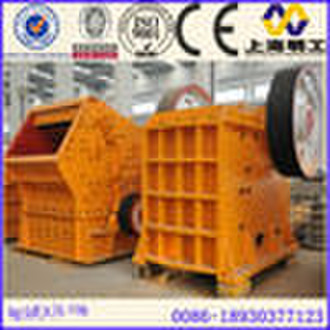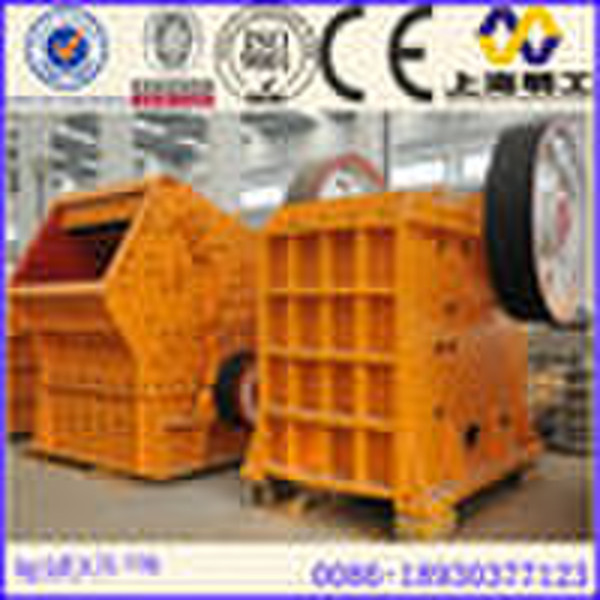Catalog
-
Catalog
- Agriculture
- Apparel
- Automobiles & Motorcycles
- Beauty & Personal Care
- Business Services
- Chemicals
- Construction & Real Estate
- Consumer Electronics
- Electrical Equipment & Supplies
- Electronic Components & Supplies
- Energy
- Environment
- Excess Inventory
- Fashion Accessories
- Food & Beverage
- Furniture
- Gifts & Crafts
- Hardware
- Health & Medical
- Home & Garden
- Home Appliances
- Lights & Lighting
- Luggage, Bags & Cases
- Machinery, Hardware & Tools
- Measurement & Analysis Instruments
- Mechanical Parts & Fabrication Services
- Minerals & Metallurgy
- Office & School Supplies
- Packaging & Printing
- Rubber & Plastics
- Security & Protection
- Service Equipment
- Shoes & Accessories
- Sports & Entertainment
- Telecommunications
- Textiles & Leather Products
- Timepieces, Jewelry, Eyewear
- Tools
- Toys & Hobbies
- Transportation
Filters
Search

hematite dressing plant / iron ore benficiation /
original price: 100 000 USD
Shanghai, China

Edward Wang
Contact person
Basic Information
| Place of Origin | Shanghai China (Mainland) |
|---|---|
| Brand Name | Minggong |
| Model Number | H/L D |
hematite dressing plant/iron ore benficiation/magnetite beneficiation Introduction to Technics of 1000 TPD Hematite Dressing Overview Hematite is weak magnetic associated ore. The chemical composition of hematite is Fe 35% 39%, S 0.13%, P 0.2%, Si 14.09%, Al2O3 7.67%. The Mohs’ scale of hardness of the hematite is 6. The flow of the technics would be: 1st stage ore washing----storage----1st stage crushing----2nd stage crushing----3rd stage crushing----2nd stage ore washing----storage----feeding ore into rotary kiln----magnetizing roasting----ore cooling----storage----ore milling----magnetic separation----dehydrate----fine ore. The technics of coal powder making would be: coal storage----coal milling----coal powder concentrating----coal powder scaling----burning----tail gas processing. Ore extracting and washing According to data provided by customer, the physical size of ore we are processing is no bigger than 500mm. Ore is transported to raw material storage by truck. The volume of storage should be no less than 30000 ton. The storage can be divided into three parts: raw ore storage, big size ore storage and washed ore storage. Ore is sent to raw material silo. At the top of the silo, it is a screen which can pick out ore with size bigger that 100mm. Ore bigger than 100mm will be sent to big size ore storage, while smaller than 100mm goes into the silo. There is a discharge opening at the bottom of the silo, through which the material can go into to a 2FG2000*9000 double screw sand washer to be washed. Given that the ore contains soil at a content of 60%, this sand washer is necessary to remove the soil and other impurity from the ore. The output of this screw sand washer is 2000 ton per day. The washed ore is sent to washed ore storage by belt conveyor. Washed ore with size bigger than 100mm will be sent to crushing silo. Under the opening of the silo is an 1100×4900 vibrating feeder. We can adjust the vibrating amplitude of feeder to control the feeding speed. The feeder can separate the ore with size bigger or smaller than 40mm: the bigger one will be send to a crusher, smaller one to a circular vibrating screen. Ore Crushing and Storage Washed ore and ore bigger than 100mm are sent to a jaw crusher 600×900 for first stage crushing. The output size of jaw crusher is no larger than 80mm. The output of first stage crushing is sent to second stage crushing, two 250×1200 jaw crushers, to be crushed into size smaller than 25mm. The output of second stage is sent to a 2YK1860 circular vibrating screen, which has two layers screen, 25mm and 10mm. Rock with size bigger than 25mm will be sent second stage for further crushing. Rock with size smaller than 25mm is sent to the 3rd stage crushing, 1200×600 hydraulic roller crusher, to be crushed into size no bigger than 10mm. Ore with size smaller than is sent to 2nd stage washing. The washed ore will be sent to a raw material silo, capacity 100t, by belt conveyors and two 400-type buck elevators. The silo should be able to store 300 ton material. We apply two flows in this plant; there should be a small silo at head of each rotary kiln. There are electromagnetic vibrating feeders at the bottom of silos to feed material into rotary kilns. Magnetizing Roasting and Cooling Material, smaller than 10mm, is fed evenly to rotary kiln feeder by a valve feeder which is installed at the bottom of raw material silo. Then, the material is fed into 3.5m×60m metallurgy rotary kiln. The ore reaction contains three stages: preheating, high-temp calcining, cooling. The temperature of high-temp calcining should be 900°C, and the time should be 30 60 minutes. After the reaction in the kiln, Fe2O3 become Fe3O4, which is magnetic. The reducers of this reaction would be C and CO. And the chemical reaction formula would be: 3Fe2O3+C→(600°)2Fe3O4+CO,3Fe2O3+CO→(600°)2Fe3O4+CO2 . While calcining, combined water of ore escapes, the grade of ore is improved. Magnetic ore goes through a discharge opening of rotary kiln into FG1200*9000 sand washer for cooling. This machine cools the magnetic ore to 100°C. After cooling, magnetic ore will be stored. The waste air come out of the rotary kiln will be purified and sent to the atmosphere. There is a tube connecting the end of rotary kiln and the coal mill, using the hot air in the kiln to dry the coal. Coal powder making and burning Coal requirement is: heat productivity no less than 6500Kcal/kg, size smaller than 10mm. Coal is elevated into the coal silo, capacity 35 ton. There is a electromagnetic vibrating feeder, which feed the crushed coal into a 2.4×4.75m coal mill, at the bottom of this silo. Coal is milled into powder in the coal mill. A blower press air to lift coal powder to a Type 350 powder concentrator which picks out the qualified powder. The unqualified powder will be sent back for further milling by a screw conveyor. The qualified will be sent to a 96-5 dust collector by air. The collected powder is stored in a 25 ton capacity silo. Under this silo, there is a coal powder scale system, which can adjust the coal powder feeding speed. Powder and air is sent to a HNZL-2 burner buy a roots blower. The high temperature which this burner can generate is 1300°C. The tail gas of burning will go into a dust collector and the processed gas dust density is smaller than 200mg/m3 . Ore separation Magnetic ore is conveyed to a fine crusher first. The crushed magnetic ore is then stored in a silo. At the bottom of the silo, there is an electromagnetic feeder to control the feeding speed of magnetic ore. A belt conveyor transfer magnetic ore into 2700×4000 wet type ball mill to be mill into 150 mesh. Then the slurry is send to a 2400×9000 high type classifier. Qualified ore will run into a 1200×3000 magnetic separator, unqualified will be sent back to ball mill for further milling. The magnetic separator’s magnetic density is 2400 Gauss. It can improve the Fe content in the ore up to about 50%, recovery rate about 90%. The tailing is sent and stored into a tailing pool. 50% Fe content ore slurry is then sent to the second stage magnetic separation, 1200×3000 magnetic separator, 1800 Gauss. It can improve the Fe content up to about 60%, recovery rate about 93%. The final ore slurry is send to a disc type filter 2PG40-8 to dehydrate. The dry final ore contain moisture less than 5%. The tailings will be push to a disc type filter by a slurry pump for dehydration. The dried tailings can be stored for further usage. Shanghai Minggong Heavy Equipment Co., Ltd.
Delivery terms and packaging
Packaging Detail: bulk shipping Delivery Detail: 90 days
Port: Shanghai
Payment term
Letter of credit
Telegraphic transfer
-
Payment Methods
We accept:














